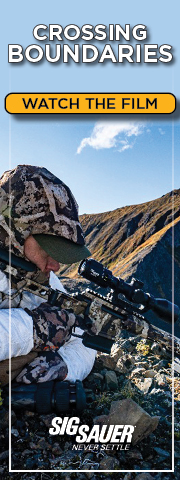Ok-Ok. I admit that I was trying to start a debate about calling on newbie Ben\'s thread. Some think calling would enhance his chances, and I have said just the opposite.
Here is my take on this matter: I agree Ben needs to start somewhere if he wants to call. Calling is certainly not the only and often not the best way to get elk. Ben would do much better by learning on the ground from his friend, assuming he is a successful caller. Everyone knows that you call from cover. So what? The bull comes and looks at your calling location from 60-100 yards away and sees no elk. He walks back and forth in the brush, turns and leaves before you have any shot at him. All you did was educate him. You cow call and he comes to see the cow, but there is none. Educated bull. He answers, but does not come. What will you do? How do you plan to get him? How do you get him to come your way? Where will you plan to set up? Are you going to tell Ben to throw a stick, roll a rock, or pour your water on the ground to entice the bull? In just the right situation that might work, but what is just the right situation?
In another scenario, he comes in silent, and sees you before you can draw and shoot. Educated bull. Considering that the bull moves to try and scent or see you, your newbie chances of killing the bull by calling are slim at best.
Set-up, hunter movement, right call for the situation are all critical. Going around tooting or mewing with a diaphragm in you mouth is worse than a waste of time. It runs off the elk you want to shoot.
Round 1: Now lets discuss, but please don\'t suggest Ben buys a Playbook, and carries that around to consult on the run. As a newbie, he would do as well to have a F150 service manual with him.
Here is my take on this matter: I agree Ben needs to start somewhere if he wants to call. Calling is certainly not the only and often not the best way to get elk. Ben would do much better by learning on the ground from his friend, assuming he is a successful caller. Everyone knows that you call from cover. So what? The bull comes and looks at your calling location from 60-100 yards away and sees no elk. He walks back and forth in the brush, turns and leaves before you have any shot at him. All you did was educate him. You cow call and he comes to see the cow, but there is none. Educated bull. He answers, but does not come. What will you do? How do you plan to get him? How do you get him to come your way? Where will you plan to set up? Are you going to tell Ben to throw a stick, roll a rock, or pour your water on the ground to entice the bull? In just the right situation that might work, but what is just the right situation?
In another scenario, he comes in silent, and sees you before you can draw and shoot. Educated bull. Considering that the bull moves to try and scent or see you, your newbie chances of killing the bull by calling are slim at best.
Set-up, hunter movement, right call for the situation are all critical. Going around tooting or mewing with a diaphragm in you mouth is worse than a waste of time. It runs off the elk you want to shoot.
Round 1: Now lets discuss, but please don\'t suggest Ben buys a Playbook, and carries that around to consult on the run. As a newbie, he would do as well to have a F150 service manual with him.



